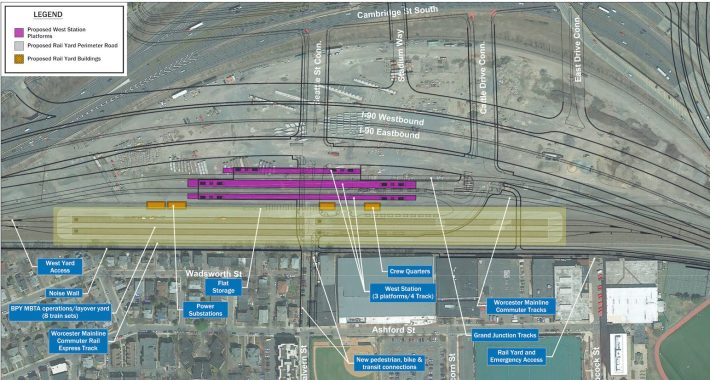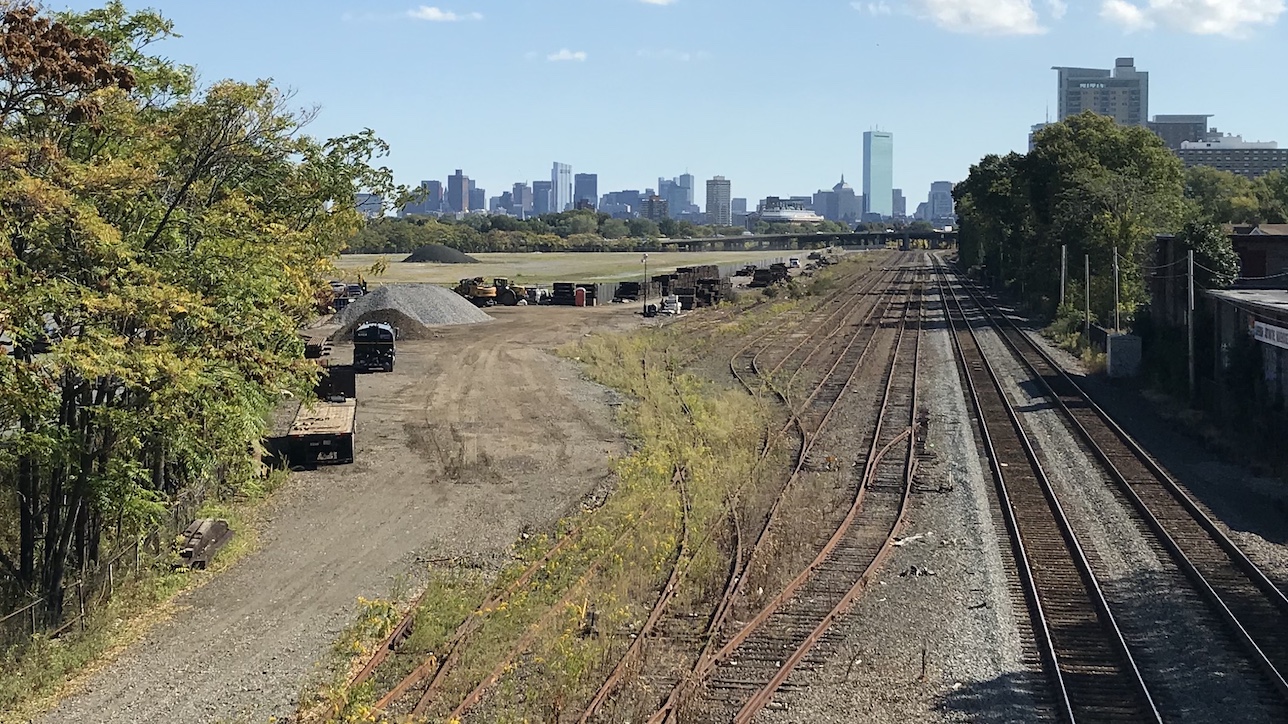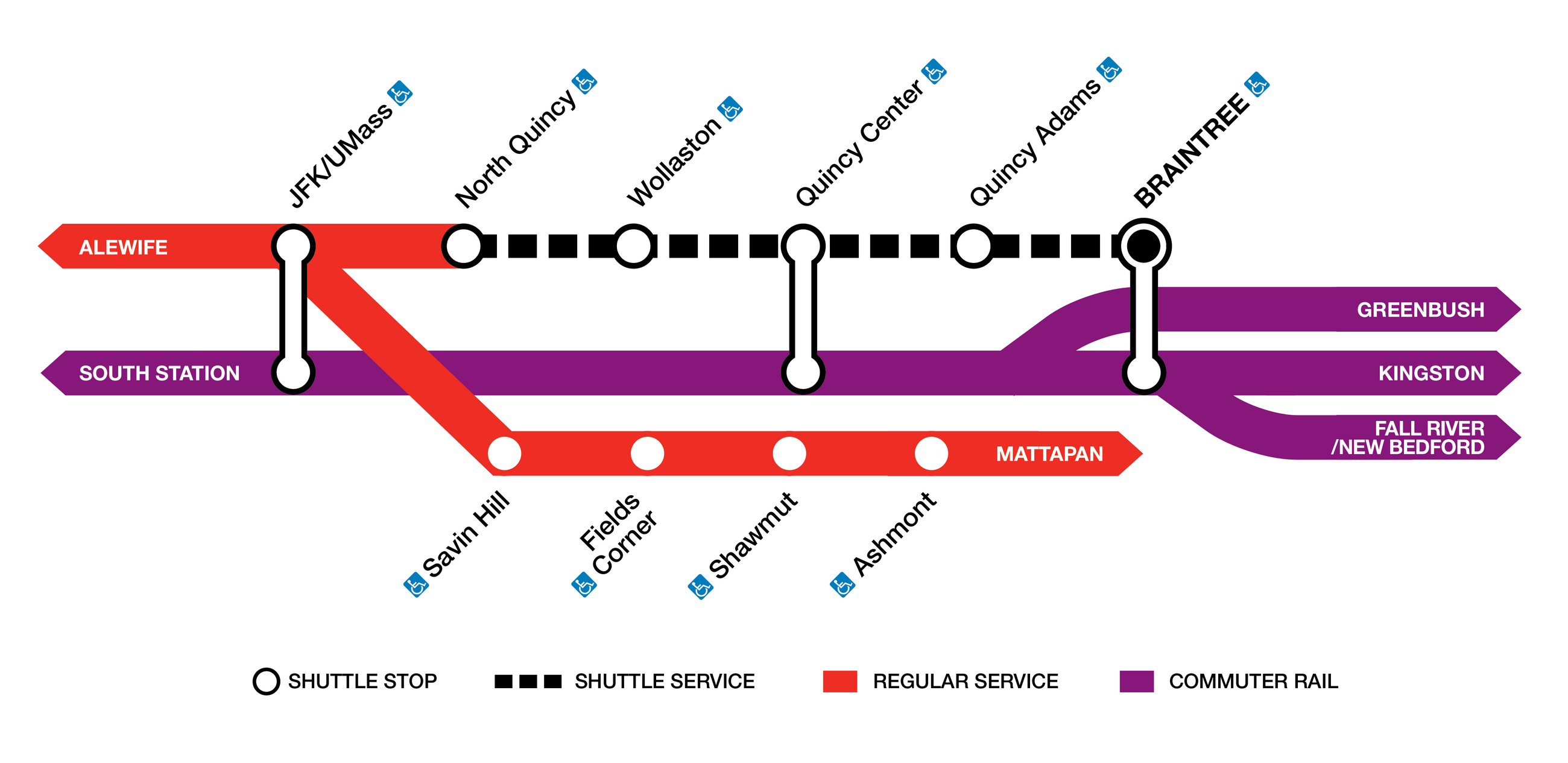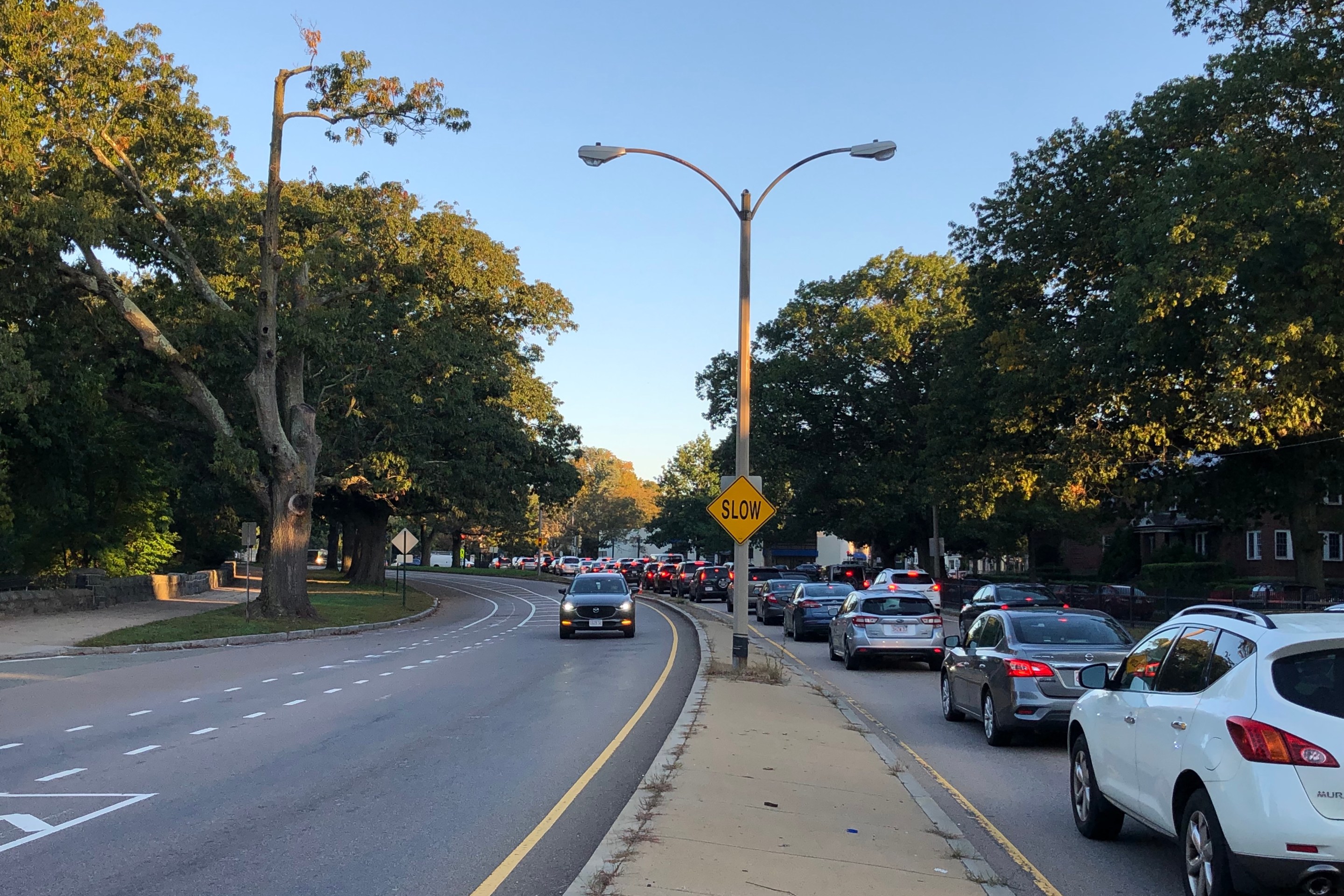
In an email to elected officials earlier this week, MassDOT Secretary Monica Tibbits-Nutt wrote that the state's plans for a new $2 billion highway interchange in Allston "will include layover tracks for MBTA/Compass Rail trains, two express tracks for the Worcester Mainline, and a larger buffer path," contrary to comments she'd made earlier this year.
The announcement generates yet another major point of uncertainty for the Allston Multimodal Project, which has been in planning for over a decade now yet still faces major unresolved logistical conflicts, financing shortfalls, and environmental permitting challenges.
Jessica Robertson, an Allston resident and neighborhood representative to MassDOT's project task force, told StreetsblogMASS on last week that the Secretary's announcement took many stakeholders by surprise.
"It's a dramatic reversal, and this decision was made behind closed doors, with zero communication with the task force or any of the other stakeholders," said Robertson.
'The layover's gotta go' is gone
Since the early stages of the Allston Multimodal Project's design, the MBTA has lobbied to reserve space for a multi-acre layover yard where it could store up to eight trains next to the project's proposed West Station (see plans below).

However, many transit advocates and Allston residents objected to the idea of building what was effectively a massive parking lot for diesel trains in the middle of what was supposed to become a new transit-oriented neighborhood.
Their cause appeared to gain some momentum when, in 2022, the T agreed to spend a $155 million dollars to acquire Widett Circle, a 24-acre industrial property in South Boston, for a much larger, more centrally-located layover facility near South Station. The Healey administration completed that purchase in April 2023.
In a March letter co-signed by advocates from TransitMatters, the LivableStreets Alliance, Boston Cyclists Union, and several neighborhood groups called the proposed Allston layover "unnecessary, inconsistent with the MBTA’s Regional Rail vision, (and) incompatible with economic development."
In April, MassDOT Secretary Tibbits-Nutt told neighborhood advocates she agreed with them during the WalkMassachusetts annual celebration, where the Secretary was a keynote speaker.
"The layover's gotta go," the Secretary said twice, noting how the proposed rail yard would further divide the Allston neighborhood from the Charles riverfront, contrary to the spirit of the federal "reconnecting communities" grant that the state had received to finance the project.
"I’d had a whole bunch of renewed hope and confidence when the Secretary made those comments at the WalkMassachusetts event," Robertson told StreetsblogMASS last week. "It demonstrated an understanding of the issues, and was consistent with what all the stakeholders, including the neighborhood and Harvard, had been saying for many years."
In the memo that reversed that decision on Monday, Tibbits-Nutt notably did not make any mention of the neighborhoods that would be further divided by the new rail yard – neighborhoods where more than half of the population is non-white and median household incomes are significantly lower than the rest of Massachusetts.
Instead, she opted to focus on the perceived needs of suburban and inter-city commuters from outside of the city.
"This decision (to add the rail layover yard back into the project's scope) is necessary to achieve the growth in rail service we all desire and Massachusetts needs," claimed Tibbits-Nutt. "West-East rail service and delivering regional rail on the Worcester Main Line requires protecting our rail assets to enable critical service expansion."
City of Boston officials told StreetsblogMASS on Tuesday that they had not yet seen any technical analysis from MassDOT to justify the addition of more layover infrastructure in Allston.
Reverse value engineering
The debate over the rail yard's impacts will remain entirely theoretical unless state officials can actually figure out how to pay for the megaproject.
The shortfall in the project's financing plan is in the magnitude of hundreds of millions of dollars. Earlier this year, there had been a general agreement that MassDOT's proposed design would need to slim down considerably.
But the Secretary's decision to add a major rail facility back into the project's scope flouts that obligation.
"We have this incredible opportunity for urban transformation and urban development that everyone’s in favor of, and it’s just unbelievable to me how much they’re sabotaging it."
Jessica Robertson, Allston resident and project task force member
Robertson observes that building a multi-acre railyard on a prime site next to the new train station will considerably diminish how much housing and economic development will be feasible on the site.
"Buildings would need to be built on top of 'air rights' platforms over the rail yard, instead of on terra firma, which would be much simpler and less expensive," explained Robertson.
Less real estate development would, in turn, diminish the City of Boston's future property tax revenues from new buildings in the project area.
Previously, Mayor Wu's administration had pledged $100 million in city funds to pay for massive multi-lane streets that MassDOT wants to hook up to the project's proposed highway ramps.
That pledge, however, hinged on "value capture" from new tax revenues on the site's future real estate development.
MassDOT has been trying for decades – with little success – to promote "air rights" developments in several other places above the Massachusetts Turnpike in Back Bay and downtown Boston.
A city spokesperson told StreetsblogMASS on Tuesday that the decision to include the layover was "disappointing" and "would significantly compromise our shared commitment to build housing and reconnect the Allston neighborhood."
"The City will continue to advance efforts to shift rail layover to Widett Circle, and work with neighborhood and state leaders to deliver on the goals for Beacon Park Yard that residents and commuters deserve,” the spokesperson said.
"We have this incredible opportunity for urban transformation and urban development that everyone’s in favor of, and it’s just unbelievable to me how much they’re sabotaging it," said Robertson.
Environmental filings are still a year away
The Secretary's letter did include a small hedge: she wrote that the decision to include the layover yard in its upcoming environmental analysis filings "is an early milestone, not the final one."
"As the permitting process continues over the next year and beyond, should further analysis and/or planning determine that some of the current design elements are not required to support future rail needs, MassDOT/MBTA would be open to exploring potential design changes," wrote Sec. Tibbits-Nutt.
Under the state's Environmental Policy Act and the corresponding federal National Environmental Policy Act, MassDOT must produce an "environmental impact statement" for the Allston project that evaluates a range of environmental issues and potential design alternatives.
According to the Secretary's memo, that environmental report won't come out for another year, but the agency is beginning to work on it now.
StreetsblogMASS asked MassDOT whether the environmental impact statements would analyze a project alternative that does not include the layover facility, but MassDOT's press office did not respond to multiple inquiries.
This story was updated at 10 a.m. on Tuesday Dec. 3 to add additional information and a statement from the City of Boston's press office.






